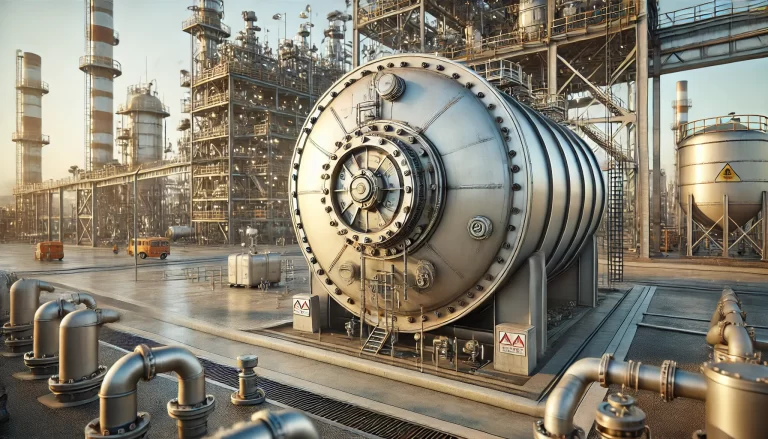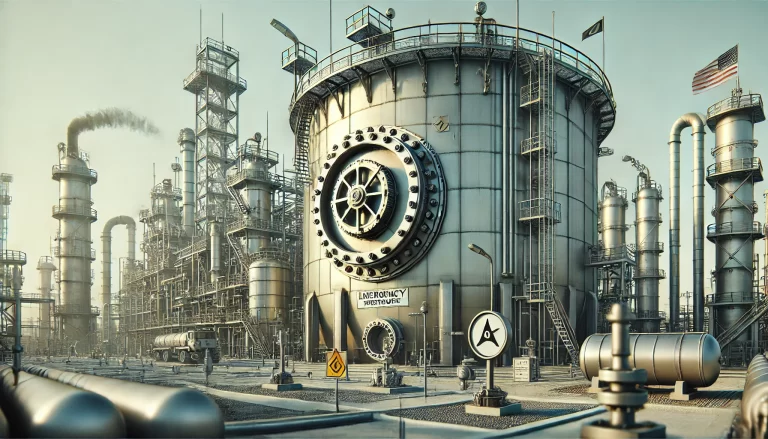In industrial applications, particularly in the storage of chemicals, petroleum, and other volatile substances, the safety of storage tanks is paramount. One critical feature designed to protect both the tank and the surrounding environment is the emergency pressure relief manhole. This device is installed to safeguard against the dangers posed by excessive pressure or vacuum conditions within the tank, ensuring the structural integrity of the tank and the safety of personnel working nearby.
What is an Emergency Pressure Relief Manhole?
An emergency pressure relief manhole is a specially designed opening or access point in an atmospheric storage tank that allows for the safe release of pressure or vacuum. Typically, it is equipped with a valve or a pressure relief device that opens when the internal pressure of the tank exceeds a pre-set limit. This system is particularly important in tanks that store liquids or gases under normal atmospheric conditions, where fluctuations in pressure can have significant consequences.

Key Functions and Purposes of Emergency Pressure Relief Manholes
Protection of Tank Structure
The primary function of the emergency pressure relief manhole is to prevent the storage tank from experiencing excessive internal pressure or vacuum conditions that could damage the tank’s structure. If the pressure inside the tank rises too high due to a thermal event, chemical reaction, or other operational issues, the manhole ensures that the pressure is relieved safely, avoiding tank rupture or deformation. This is especially critical in the storage of flammable or hazardous materials, where tank failure could lead to catastrophic consequences such as fires or explosions.
Protection of Personnel and the Environment
By releasing excess pressure, the emergency relief manhole plays a crucial role in protecting both on-site personnel and the surrounding environment. A sudden tank rupture or explosion due to over-pressurization can lead to severe injuries or fatalities and cause extensive environmental contamination. The manhole acts as a safety valve to minimize these risks by allowing the tank to vent safely, thus preventing dangerous overpressure situations. In addition to the structural safety, this reduces the potential for harmful chemical releases, especially in volatile environments where toxic substances may be stored.
Maintaining Tank Functionality
Atmospheric storage tanks are often used for the long-term storage of liquids or gases. In such tanks, maintaining an equilibrium of internal pressure is critical for ensuring that the stored substance does not undergo undesirable chemical reactions or changes in state. For example, if a tank experiences a vacuum (negative pressure), it could lead to the collapse of the tank or cause the stored materials to vaporize, leading to loss of inventory or even dangerous reactions. The emergency pressure relief manhole helps prevent such occurrences by balancing internal and external pressures, keeping the tank in a stable, functional state.
Preventing Fire or Explosion Risks
In industries such as oil and gas, chemicals, or liquefied petroleum gas (LPG) storage, the risk of fire or explosion due to over-pressurization is a real concern. The emergency pressure relief manhole mitigates these risks by allowing flammable gases or vapors to be safely vented in controlled amounts. If a tank is sealed too tightly and pressure begins to build up, without proper relief, the pressure can cause a violent release of gases that could ignite, causing explosions. The manhole allows for the gradual release of pressure and vapors, significantly lowering the risk of fire or explosion.
Regulatory Compliance and Safety Standards
Many industries that involve the storage of hazardous materials are governed by strict safety regulations. These regulations often require the installation of emergency pressure relief systems to ensure that tanks remain within safe operating pressures. These regulations, which may be dictated by national or international standards (such as OSHA, EPA, or NFPA), ensure that facilities have measures in place to respond to extreme pressure conditions. By having a pressure relief manhole, companies can demonstrate their compliance with these safety and environmental regulations.
How Does an Emergency Pressure Relief Manhole Work?
Typically, the emergency relief manhole is equipped with a vent or a valve that is designed to open when the internal pressure exceeds a specified limit. The valve is calibrated to open only under emergency conditions and is designed to close automatically once the pressure returns to safe levels.
There are a few common types of pressure relief devices used in conjunction with these manholes:
Pressure Relief Valves (PRVs): These are designed to open when the internal pressure exceeds a specific threshold. Once the pressure is relieved, the valve closes automatically, ensuring that the tank can return to normal operation.
Bursting Discs: A more passive solution, bursting discs are designed to rupture at a specific pressure. When the tank pressure exceeds the burst rating, the disc breaks, allowing gases or liquids to escape. These are typically a one-time-use solution and need to be replaced after activation.
Flame Arresters: In cases where flammable vapors might be released during an emergency venting process, a flame arrester may be installed in the pressure relief system to prevent any potential sparks or flames from igniting the vented gases.

Conclusion
The installation of an emergency pressure relief manhole is an essential safety feature for atmospheric storage tanks, particularly those used for the storage of volatile liquids or gases. These devices are designed to protect the tank from overpressure or vacuum conditions, ensuring the structural integrity of the tank, safeguarding the lives of personnel, and reducing the environmental impact of any hazardous releases. By providing an effective means of pressure relief, the emergency pressure relief manhole plays a pivotal role in maintaining the safety and functionality of storage tanks, helping industries comply with stringent safety regulations and industry best practices.
